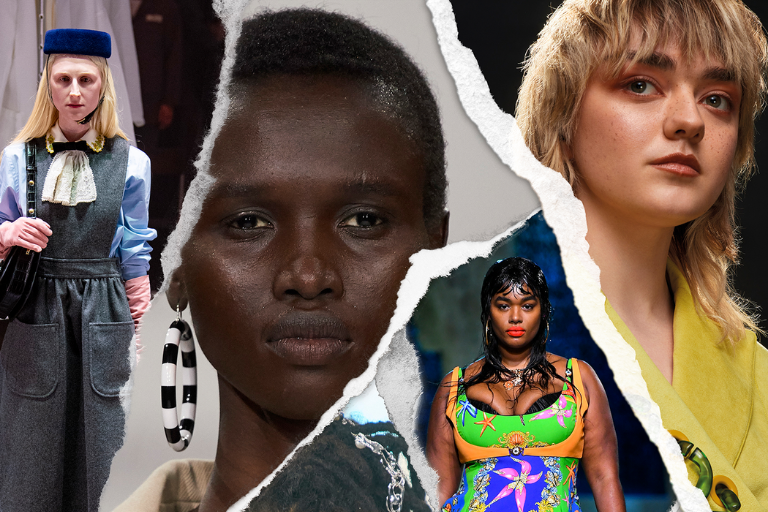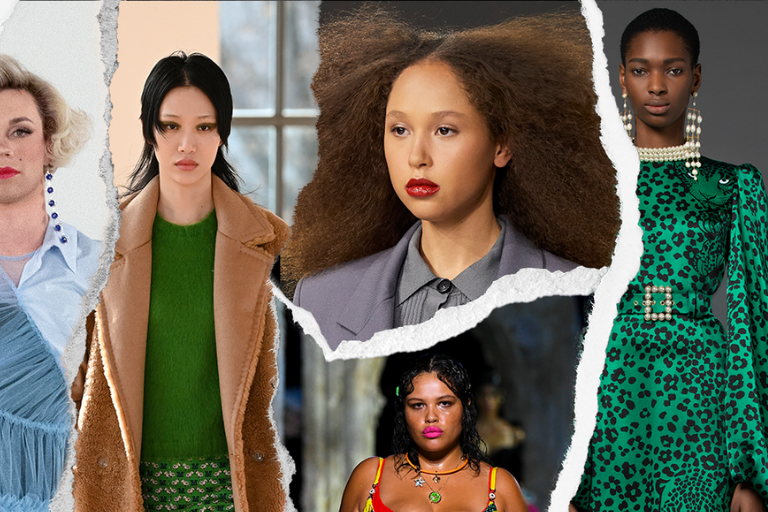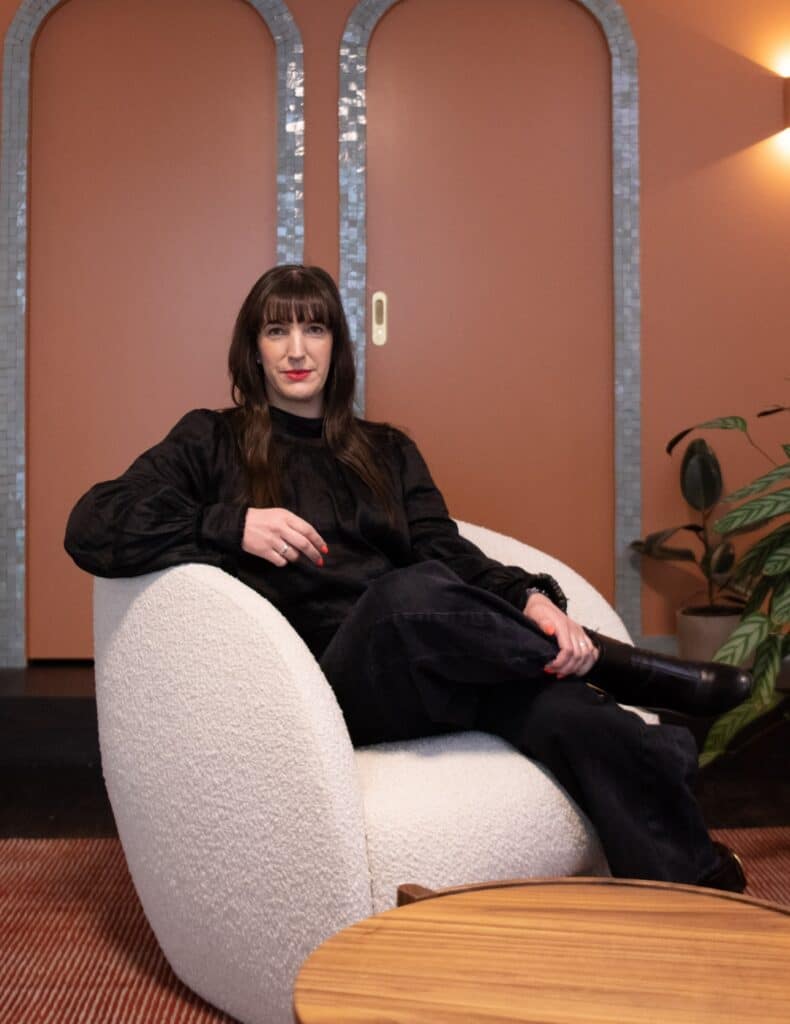
As I write this, Instagram is awash with images from French fashion favourite Jacquemus’s latest campaign, L’Amour. Styled by super talented Kiwi Zoey Radford Scott, the models are photographed as couples: different gender pairings, different skin tones and ethnicities, different body shapes. As far as diversity goes, many would say that Jacquemus is one of the international brands paving the way for a more inclusive future of fashion.
I’m 43 years old. I remember when Kate Moss was invented and diversity meant having a gaunt, grimy white girl instead of a healthy shiny one — people thought that was diverse casting. The fact that the girl was still cis-gendered; able-bodied; young; and, of course, white, was a given. Right now, today, looking at Jacquemus’s campaign images, it’s easy to feel pretty good about how far things have come.
And yet. Another bright Kiwi creative has commented under the Jacquemus social imagery, pointing out — and he’s right — that within today’s appreciation of diversity, there is still very little variation in the types of male bodies we are shown. “I think it’s a bit shit that all the guys cast are muscular,” comments designer Glen Prentice. “The women are varied and represent a spectrum of body types — the guys are all jacked.” Yes, we are seeing more and more diversity in ethnicity, but we only really see a limited range in male body size. In other words, plus-size men isn’t really a thing in modelling — or, if it is, it’s certainly not celebrated in the same way that plus-size women are beginning to be, and, when we think about diverse casting, we largely ignore bigger men.
Should plus-size male models be a thing? Probably. Is this going to be an article campaigning for plus-size men? No. But it is incredible to me, thanks to my young friend, to be shown that there are more. More human beings who have never, and possibly will never, ‘see themselves’ in an image that says that it’s good to look like you.
And therein lies the fairly heavy responsibility that’s placed on a fickle industry: model casting is a loaded privilege, because to choose a face is to choose a message.
Challenging the norm
Still, we have seen some drastic changes to an industry that, despite being full of visionaries, is marred by the same norms that many other sectors are rotten with. Systemic racial bias and harmful body-type beliefs don’t just affect the fashion world — they are what it’s built on, and they have held power since the birth of modelling in Paris in the 19th century. Much of the change has come appallingly, embarrassingly late: in the US, underage models were only given child protection laws (as all underage actors get) in 2013, and BMI minimums (body mass index, to ensure healthy weight) were only introduced in France in 2015 (with some saying that these are still largely ignored or manipulated anyway). But it’s progress — and happily, The Fashion Spot’s Diversity Report showed that New York’s spring 2020 runway was the most racially diverse fashion week yet.
The narrative has shifted, largely thanks, I believe, to pressure from a new generation, who are not only closing in but pushing past us on the shifts that we have been struggling with for generations. The Gen Z creative, tomorrow’s Jacquemus, is way ahead of us in their instinctual world view, and they are impatient for the establishment to catch up. We are at a different point — one that’s swathed in modern anxiety, and this generation’s blanket intolerance for outdated practice and poor excuses means that old standards are fast becoming irrelevant. My newest agency business partner, Franca, is 23 and shares: “I think that my peers and community are hungry to realise our dreams and add to the aesthetic industry, but excuses and poor practices such as asking models to work for free (which is a common occurrence) feels like a manipulation of this hunger. I like to think of diversity as a reflection, and I think many agencies now reflect better than they did five years ago. I hope to see this extending to other areas, professional and geographical, of the fashion industry in Aotearoa, and emerging creatives supported to keep growing and going. This is what will make our industry louder and more vibrant and dynamic.”
But is it fashion’s responsibility to lead the way in social harmony? Do people look to fashion to understand diverse human communities and gain acceptance of cultural differences? Perhaps not consciously, but with digital marketing experts estimating that modern humans consume up to an astronomical 10,000 advertisements a day, those who create advertising imagery of any kind have a duty of care. After all, as local writer Ben Fahy pointed out so succinctly in an unrelated piece recently: “Media and advertising tend to reflect culture, but they can sometimes create it.” Fashion takes up a lot of space in many minds, and therefore that space must be challenging, dynamic, and full of possibility. Paloma Elsesser, a plus-size Black model who was recently on the cover of US Vogue, said at the time: “There shouldn’t be this grand separation between art, culture, fashion, and politics. Not every part of fashion needs to focus on politics and reality — this isn’t CNN — but ultimately, we all have a level of responsibility. What’s the downside of giving visibility to disabled people, putting dark-skinned femmes at the forefront, or prioritising diverse perspectives?”

Building a more diverse future
So, where are we at in New Zealand? We have followed the general trajectory of embracing a pretty single-minded view on beauty. The blinkers have slowly been prised off over the last few years, and there have been some star players on that journey. Manahou Mackay, who graces the cover of this very issue, is perhaps our strongest symbol of change: traditionally beautiful, able-bodied, and lithe, sure, but also Māori and transgender. Mana told Radio New Zealand last year, talking about her introduction to the world at New Zealand Fashion Week: “There is almost internalised transphobia, even when you are transgender. It’s sewn into the fabric of society, sewn into how we think. So I definitely felt shame with that being so tied up in my identity publicly … which is fucked up. Because I’m amazing.” Mackay is now based in Sydney, and, rather than be hired as a novelty or a box-tick, she’s garnered a reputation as one of New Zealand’s best modelling exports. It’s been an amazing thing to watch her career trajectory. And I know that she has brought countless moments of hope to others.
Mackay’s current New Zealand agency, N Management (she’s signed with Kult in Australia) has recently taken its models’ measurements off its online listings. Yes, that’s right folks: at other agencies you can look up a model and read bust, waist, and hip measurements and compare them with those of the next model. While the removal of measurements might make things slightly more challenging for those casting models, reassuringly N’s co-founder Ngahuia Williams says people have hardly blinked an eye about the change.
What more does the industry need to think about? “I think agencies need to lead with their values more,” says Williams. “Some agencies will never diversify because their values don’t represent that part of the industry. Others solely focus on the money side of things and that’s what drives them. Only when you really start to care about the people you represent, the market you work in, and how you want to navigate that space does your status actually come to fruition. We have never labelled ourselves a diverse agency. We represent people we feel we can manage well and try our best to create a space for them in this industry. We are grateful for our place here and we are really happy that the market we work in receives our talent well.”
Internationally, agencies like Tomorrow Is Another Day and Midland in the US, London’s Anti-Agency, and brands like Eckhaus Latta and Collina Strada are leading the way with new philosophies and a constant stream of non-traditional faces. Higher up the luxury ladder, we have recently seen Gucci Beauty cast Down’s syndrome superstar Ellie Goldstein, and Moschino showcasing now-iconic trans disabled Black model Aaron Philip; both are examples of pivotal moments in the conversation.
“The most powerful instigator of identity, belonging and acceptance of features that vary from the omnipresent norm is increasing representation,” said model Zinnia Kumar of Anti-Agency recently — she is also a motivational speaker, described as “a vocal colourism and ethnic representation advocate, interested in decolonising and deconstructing beauty ideals and histories of scientific racism”.
“Seeing more people with distinctive ethnic features, which traditionally were invisible, creates familiarity, and what becomes familiar becomes average and this in turn becomes attractive.”
So, while voices are being heard in some respects and the consumer is being invited to engage in a much more diverse, multi-layered conversation than ever before, the question now is: how do we keep momentum building? As with all social progress, the key is in keeping the pressure on, pushing harder, thinking wider. For the fashion industry, it is imperative that we also look behind the lens at photographers, magazine editors, stylists, and designers. How well do the crews and creatives reflect the world and those they’re talking to? How can we continue to broaden the spectrum of creative power? If a face is a message, who’s holding the pen?
Fashion’s dire environmental footprint, so poignantly epitomised by incidents like the Rana Plaza factory disaster, continues to be a major focus for change and improvement. This is as it should be, but we mustn’t forget the power that the industry holds in also affecting social sustainability. The building blocks of a socially sustainable world are inclusive, just, and resilient societies, and yes, fashion reader, both you and I have our parts to play in getting there.
This article was originally published in Fashion Quarterly’s Autumn 2021 edition.










